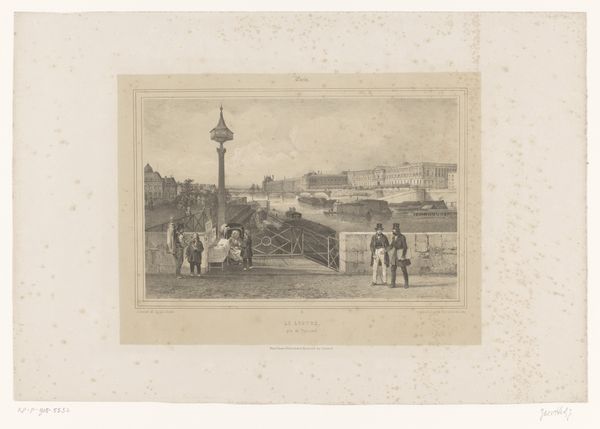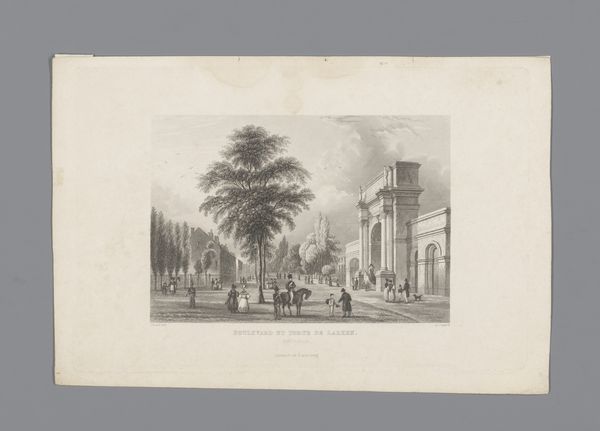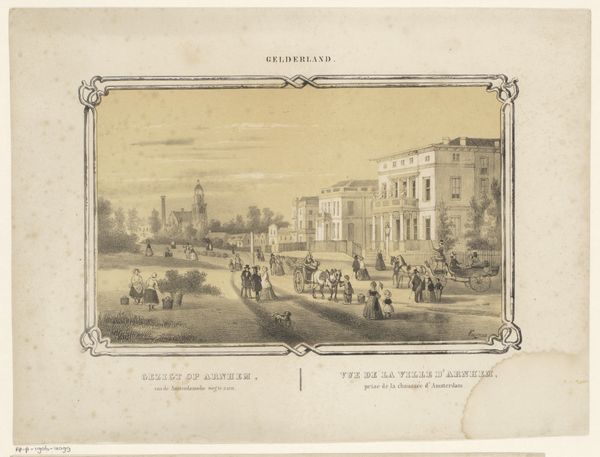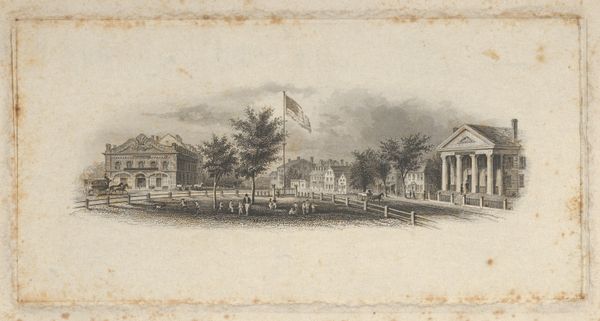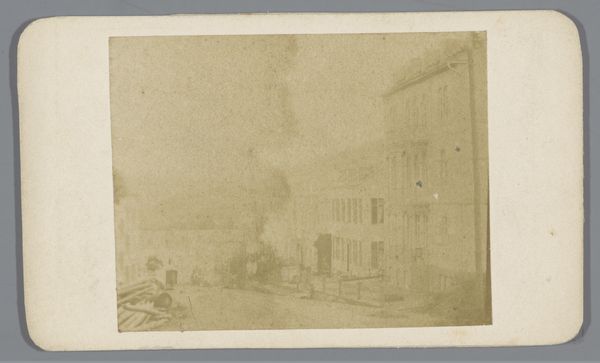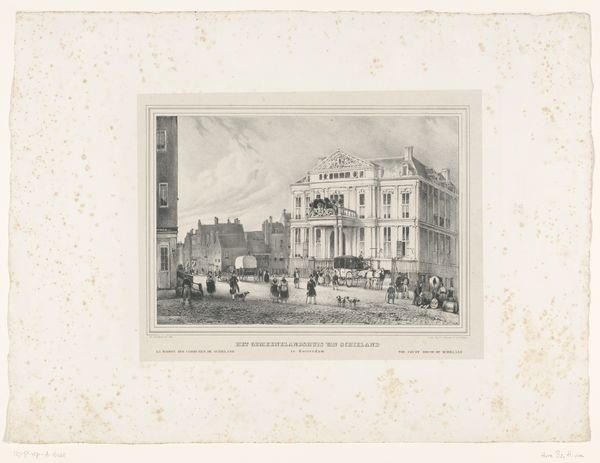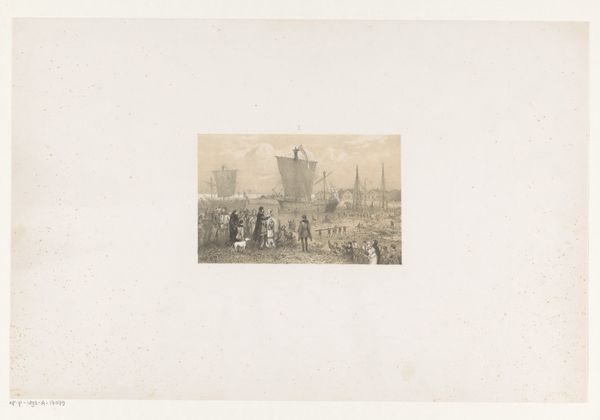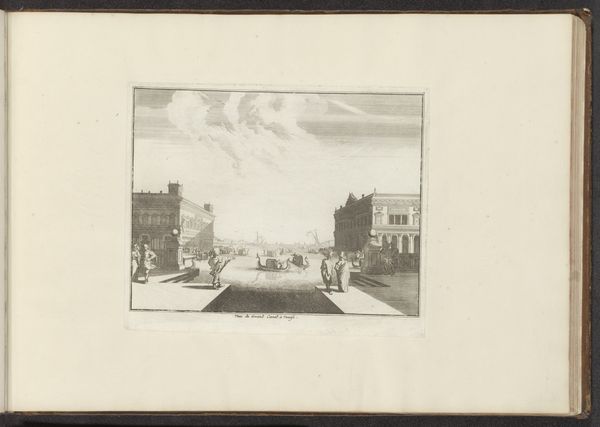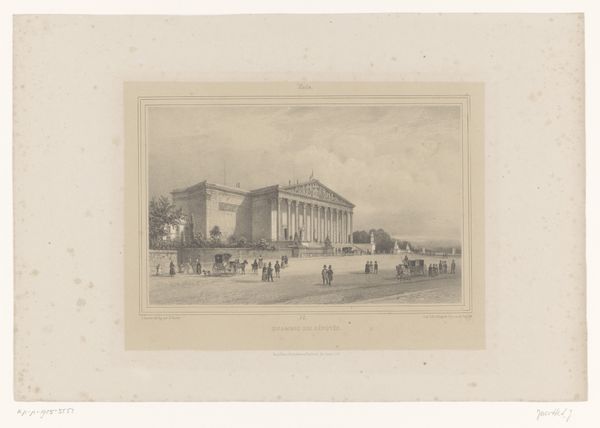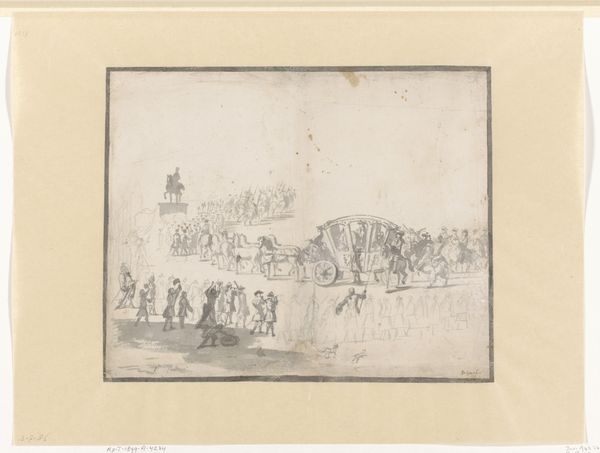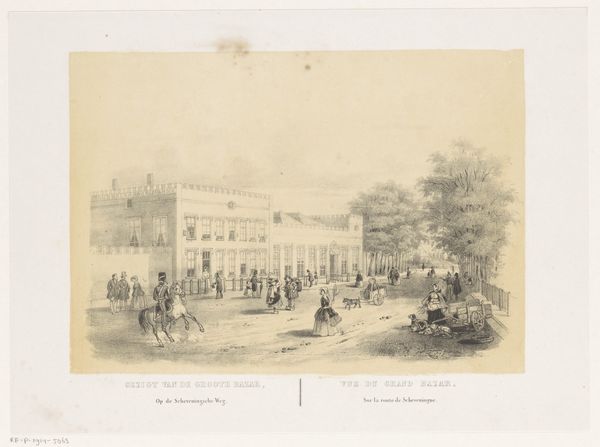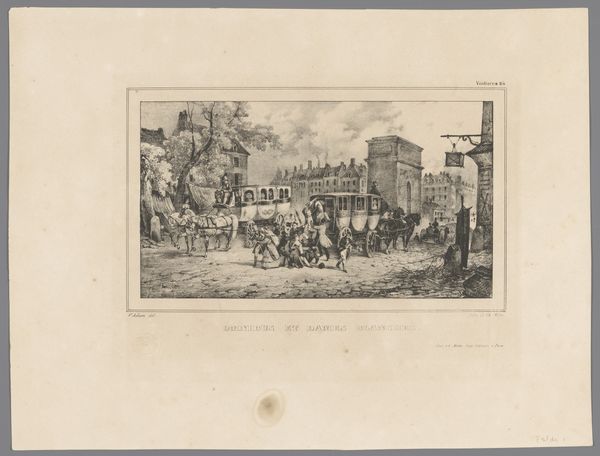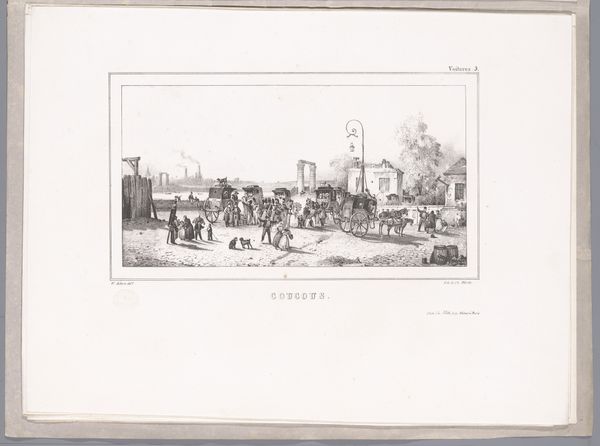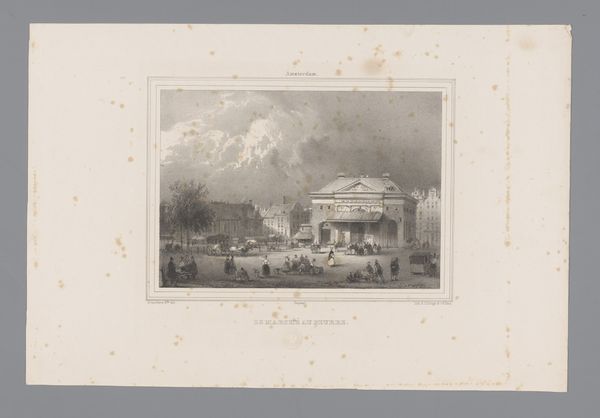
Dimensions: height 144 mm, width 220 mm
Copyright: Rijks Museum: Open Domain
Editor: This is "Gezichten op Amsterdam" by Johannes Hilverdink, created sometime between 1840 and 1866. It’s an ink drawing on paper, and the delicate lines create a hazy, almost dreamlike impression of the city. How do you interpret this work in the context of its time? Curator: This drawing offers a romanticized view of Amsterdam, certainly, but it's important to ask *whose* Amsterdam is being depicted? The architecture hints at established power structures, the formal building possibly government-related, contrasting with the everyday life of people. Consider the limited representation of marginalized communities; who is conspicuously absent from this idealized scene? Editor: That's a really interesting point. I was mainly drawn to the overall serene feeling, but now that you mention it, it does seem like a curated vision. Does the artist's choice of romanticism downplay any potential social commentary? Curator: It's quite possible. Romanticism often served the interests of the bourgeoisie, emphasizing aesthetic beauty while subtly reinforcing existing hierarchies. Note also the spatial relationships in the composition. The placement of the large formal building compared to the dwellings: Who gets prominence in the representation of urban life? Editor: So, the seemingly innocuous cityscape might actually perpetuate a specific, privileged viewpoint. Curator: Precisely. What can we learn from this portrayal of 19th-century Amsterdam? That it provides clues about who held the power to shape and preserve particular versions of history, a reflection of social power structures translated to artwork. Editor: I see how important it is to go beyond the surface and think about the broader context and whose stories might be missing. I’ll definitely view cityscapes differently now. Curator: Indeed. Questioning these "master narratives" is how we can actively engage with art.
Comments
No comments
Be the first to comment and join the conversation on the ultimate creative platform.
